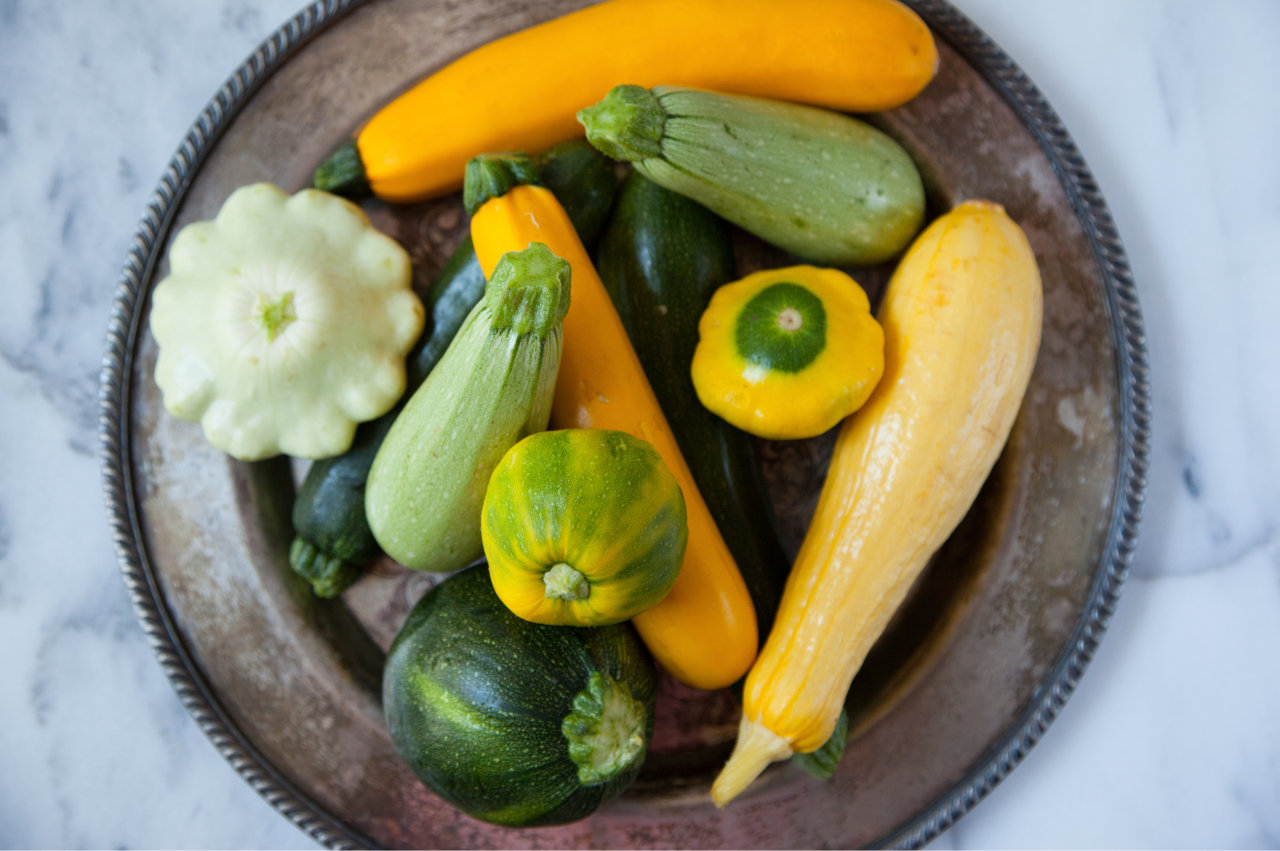Blight can wipe out your crop. Choosing the right blight resistant seed potatoes is crucial for a healthy harvest.
Read on to find out the top varieties of blight resistant seed potatoes that will save your yield....

There are several types of summer squash, which come in all shapes, sizes, colours and flavours. These include courgette (zucchini), cousa, patty-pan, luffa squash, yellow crookneck and straight-neck, zephyr and chayote. There are also hundreds of summer squash recipes too, including those for soups and stews. They can also be grilled, fried, sautéed, roasted, steamed and stuffed.
However, if you needed another reason to grow them, it could simply be because they are easy and a lot of fun for all the family. And, all summer squashes are grown from seed in a similar way.
Custard Twinkle is an excellent yellow pie-shaped patty pan variety.....
Packet Contents : 10 seeds
Courgette Atena produces high quality yellow fruits which are.....
Packet Content: 10 Seeds
Produces high yields of striking green striped fruits.....
Packet Content: 10 Seeds
Sunbeam is an excellent yellow pie-shaped patty pan variety.....
Packet Contents : 10 seeds
Zephyr is a distinctive summer squash variety.....
Packet Contents : 10 seeds
Courgette Sure Thing is a prolific parthenocarpic.....
Packet Content: 10 Seeds
For best results, sow your summer squash seeds under cover during April or May. Use 7.5cm pots or modular trays filled with quality seed compost. Place one seed per module or 2 seeds per pot, at 1.5cm deep and then remove the weaker one when they have germinated. Water the pots or trays after sowing and don’t allow them to dry out. Germination takes between 7 and 10 days. When the plants are about 15cm high or long, depending on the variety, move them to a sheltered position, away from frost, to acclimatise.
If preferred, seeds can be sown directly into their permanent positions from late May to early June.
Summer squashes are voracious feeders and will therefore benefit from some prior soil preparation. Dig in plenty of well-rotted, organic matter during the late autumn and then firm and rake over the soil bed before planting out the young plants. Some gardeners prefer to grow one or two squash plants on top of a compost heap.
When all danger of frost has passed, the plants will be ready for planting out into their permanent positions. This is likely to be from the end of May and through to July. Squashes need plenty of sunlight and they also need plenty of room to grow, so best ensure they are planted in a sunny position and away from damaging winds. Space the plants at 90cm apart and 90cm between the rows if you intend to grow them on a large scale. Applying a mulch around the base of plants will help to conserve moisture. Squashes can also be grown in growing bags or large containers of rich compost.
Squashes are made up of 95% water so it’s very important they are watered frequently and not allowed to dry out. It’s also advisable not to overfeed the plants, especially with a general fertliser, as this will only encourage further rapid growth of foliage. A high potassium-based liquid feed, such as a proprietary tomato feed, applied once every 10-14 days should suffice. Remove any dead or dying leaves and ensure there is sufficient airflow around the plants by pruning as and when necessary.
Protect against slugs and snails, which can be a problem for young, tender plants. Mosaic viruses are common diseases affecting squashes and other related plants. The virus is spread by aphids so to avoid problems, ensure any aphid attacks are dealt with promptly. Other common problems affecting summer squashes include powdery mildew, which can usually occur during the late summer and early autumn.
Plants will continue to flower and produce fruit all through the summer and up until the first frost. It’s best to harvest the fruits when they are young and tender with soft skin. Picking fruits regularly will encourage further flowering and fruit setting.
Have you got any growing hints and tips for Summer Squash? Let us know with a comment below....
All blog content on this page is copyright of SimplySeed and is not to be reproduced without prior written permission. ©
Always beware of planting out too early as it's the night time temperatures that do the damage. I made this mistake in late May not thinking that the temperature could drop as low as 4 degrees C.